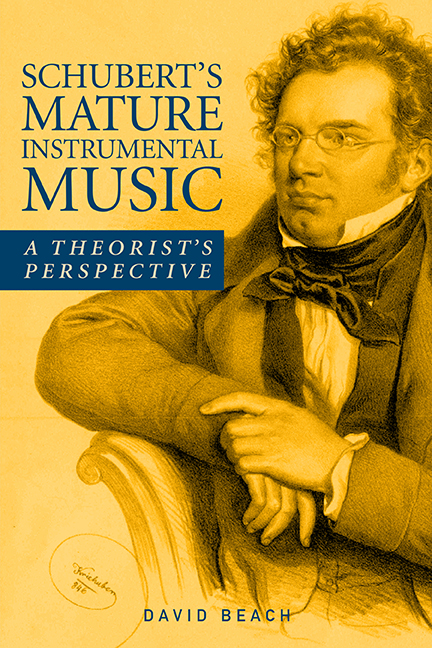Summary
The first part of this chapter presents an account of Schubert's various strategies in dealing with sonata form. I have identified five types: (1) variants of the classical model; (2) the three key/three theme exposition; (3) transposition schemes; (4) hybrid solutions: and (5) a single unifying progression. This presentation is followed by sections dealing with characteristics of first themes and the transition to the second key area, then with characteristics of development sections.
Formal/Tonal Strategies
Categorizing Schubert's sonata forms presents an interesting challenge, due to the great variety in his treatment of this formal type. I think a logical point of departure for this investigation is the application of classical procedures for sonata form, though I am fully aware of the potential danger in reducing a rich variety of schemes to a simplistic prototype. There is no single “model.” Nevertheless, I think we can agree on certain basic principles, as follows. The exposition of a classical sonata movement normally consists of two tonal areas: (1) the tonic; and (2) either the mediant, if the tonic key is minor, or the dominant, if the tonic key is major. Frequently, but not always, each tonal area is associated with its own theme, and the two tonal/thematic areas are connected by a transitional passage, most frequently based in some way on the first theme. The development section of a sonata movement in the major mode digresses from the established dominant, but then returns to it in preparation for the return to the tonic and opening theme. In a minor-mode movement, the development section connects the mediant to the dominant in preparation for the return. In both cases, the typical recapitulation begins with a double return, that is, a return to the tonic and to the opening material. Both themes, assuming there are two, are then stated in the tonic. These two “models” are, of course, subject to a wide variety of alterations and additions; these are just the bare bones. In table 4.1, I have outlined these two basic models for reference in the following discussions. Arabic numbers represent themes, while roman numerals represent keys; development sections are represented by empty parentheses (except for V7 representing the retransition). The following description of Schubert's sonata-form strategies is divided into five types, beginning with variants of classical models.
- Type
- Chapter
- Information
- Schubert's Mature Instrumental MusicA Theorist's Perspective, pp. 79 - 96Publisher: Boydell & BrewerPrint publication year: 2017

